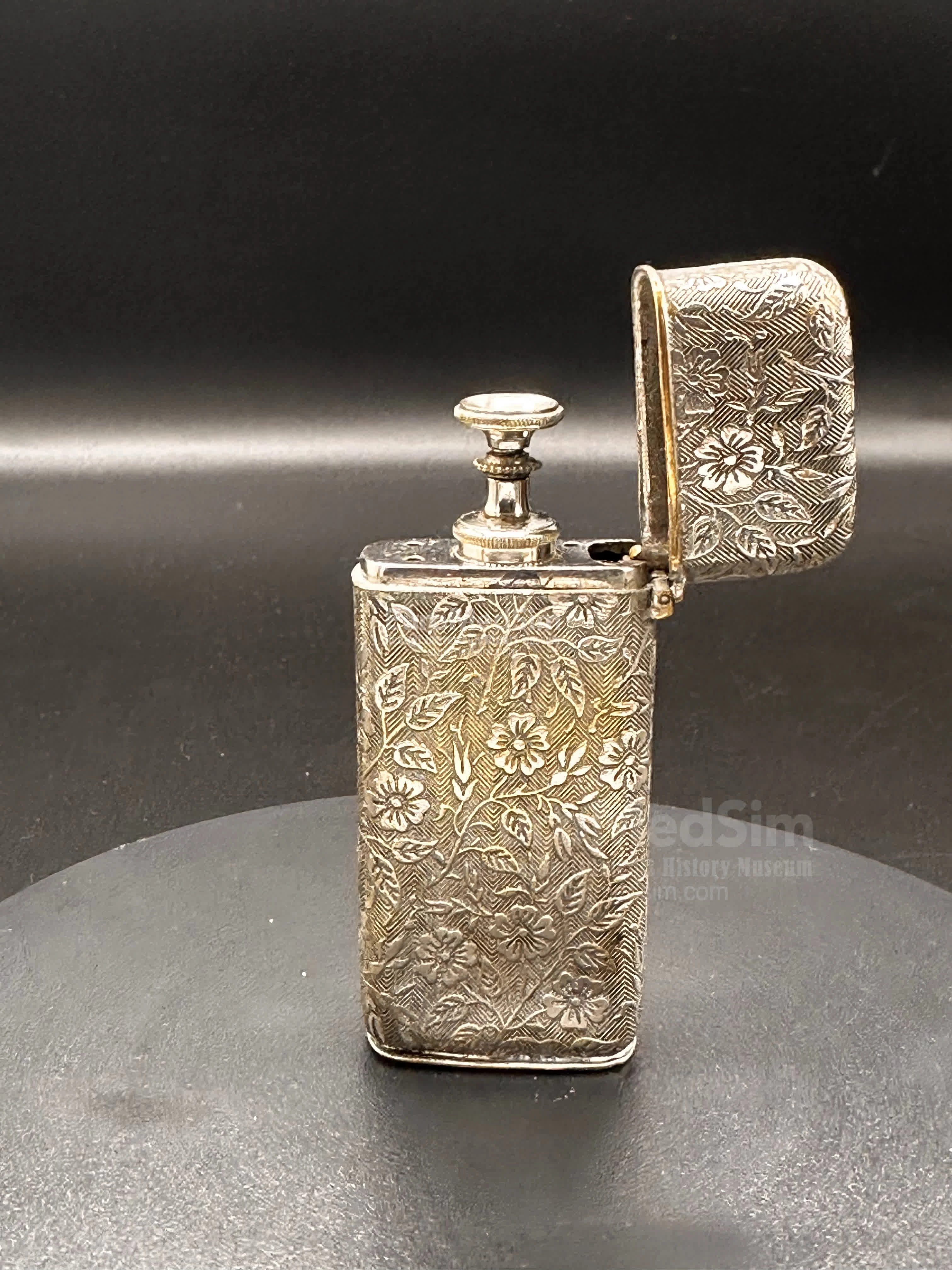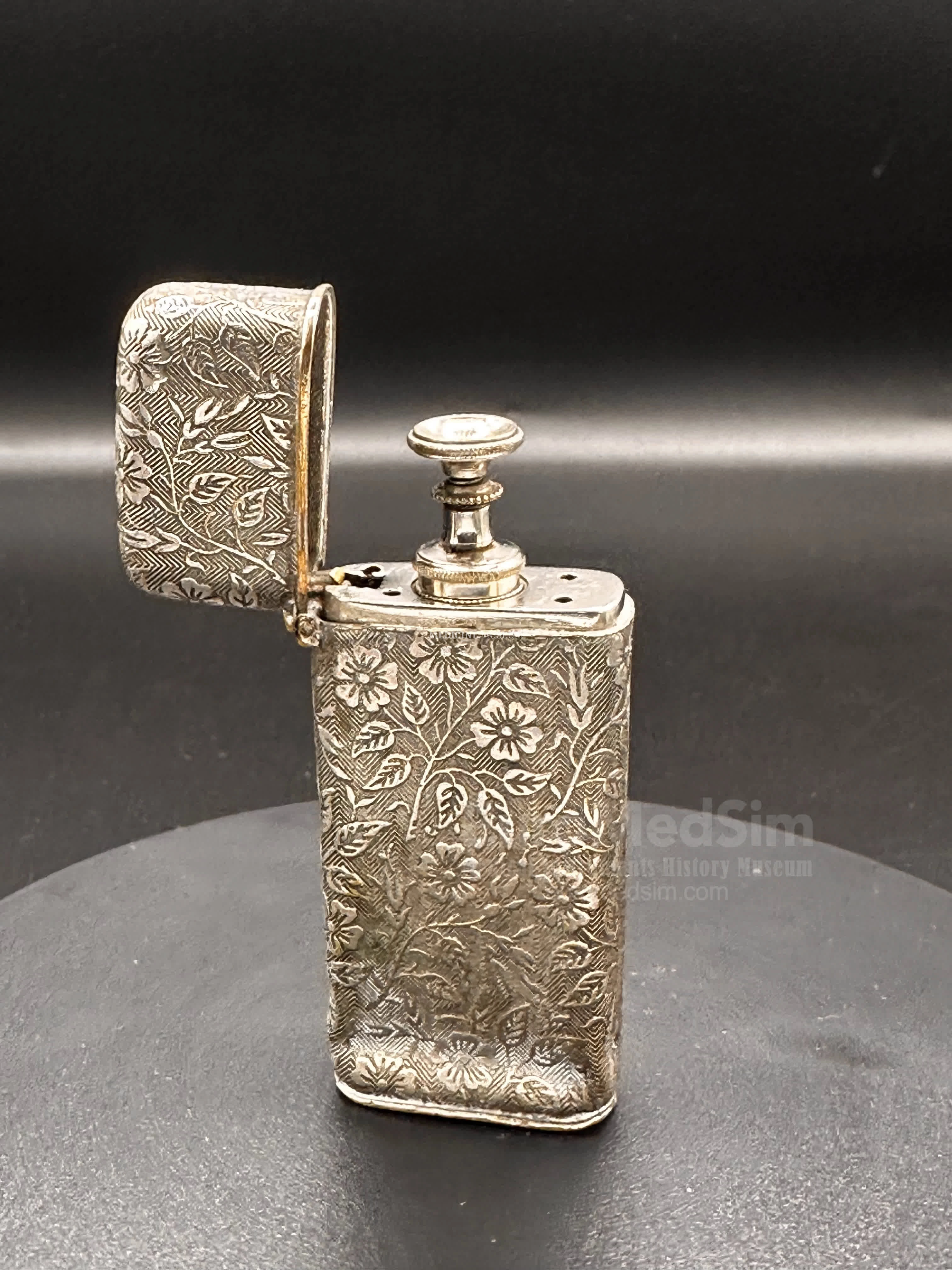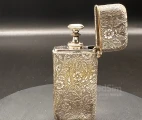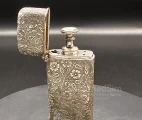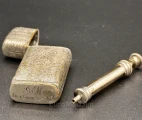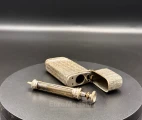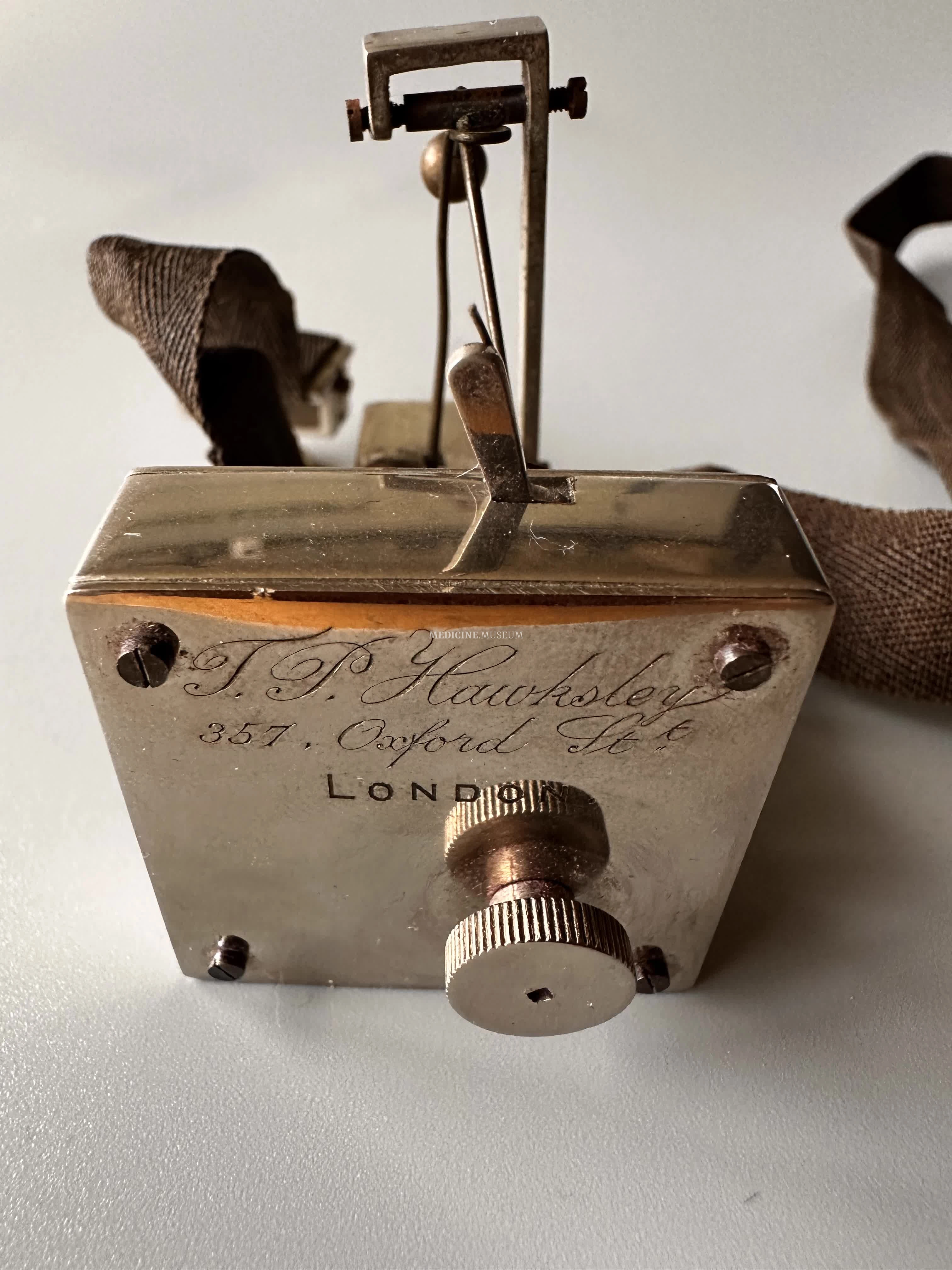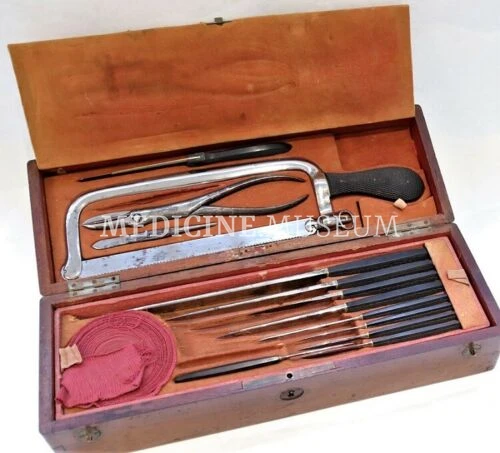Hypodermic syringe in floral ornamented nickel-silver case
Object description
The syringe is presented in a silver-like metal box with rich floral ornamentation. As the hallmark is missing, the silver-like box may be made of "German silver" alloy (see note below). The item was probably a graduation gift for an ENT class - engraved on the bottom is "T.A.M. Ear & Throat Class. 1901", where T.A.M. may stand for Texas A&M University, TAMU (see note below). The lid of the box closed with a latch. The box had a compartment for the syringe and holes to hold needles and mandrains for cleaning their inner lumen (not presented). The Pravaz system detachable syringe, with a glass barrel and a serrated mechanism to ensure accurate dosing of small amounts of medication. The Pravaz syringe was a pioneering device for its time, laying the groundwork for modern hypodermic syringes, which are essential for medical treatments and vaccinations today - see note below.
Condition report
One wall of the case is slightly concave inwards, otherwise in good condition. Contains a syringe. Needles and madrains are missing. Dimensions: 73x14x30 mm (HxLxW), weight: 64 g.
Provenance
Property from an important North American collection of surgical and dental instruments – Collection of Dr. Bruce Logan, Medford, OR, USA. Acquired from the above in 2023.
Reference objects
A suitable reference object may be an item from the Science Museum Collection, London, UK: Hypodermic syringe, steel and glass, in silver case, A85212/1.
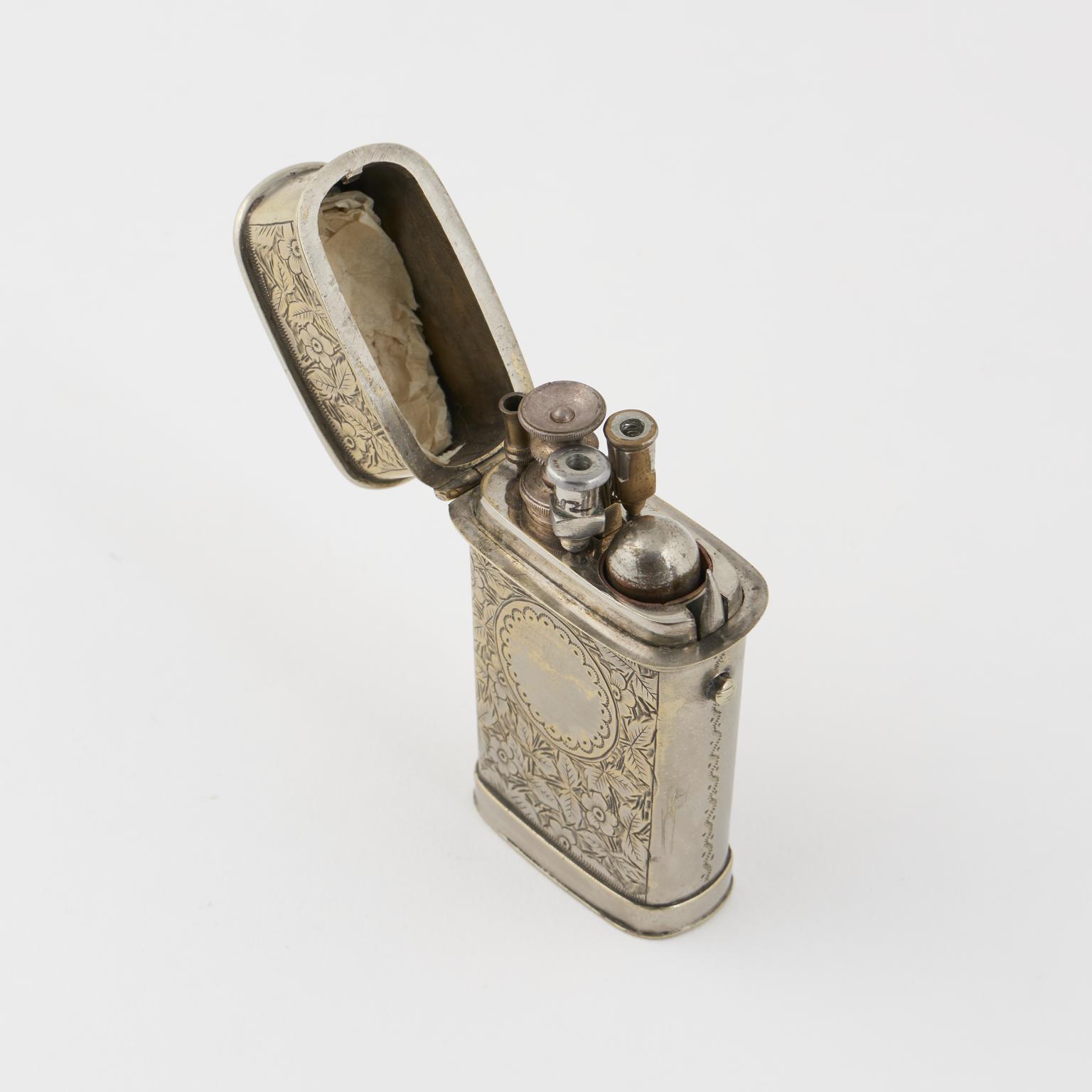
These products were extremely popular at the turn of the 19th and 20th centuries and were manufactured by many medical instrument manufacturers. Below is an illustration from the Arnold and Sons catalogue. Credit: EuroMedSim
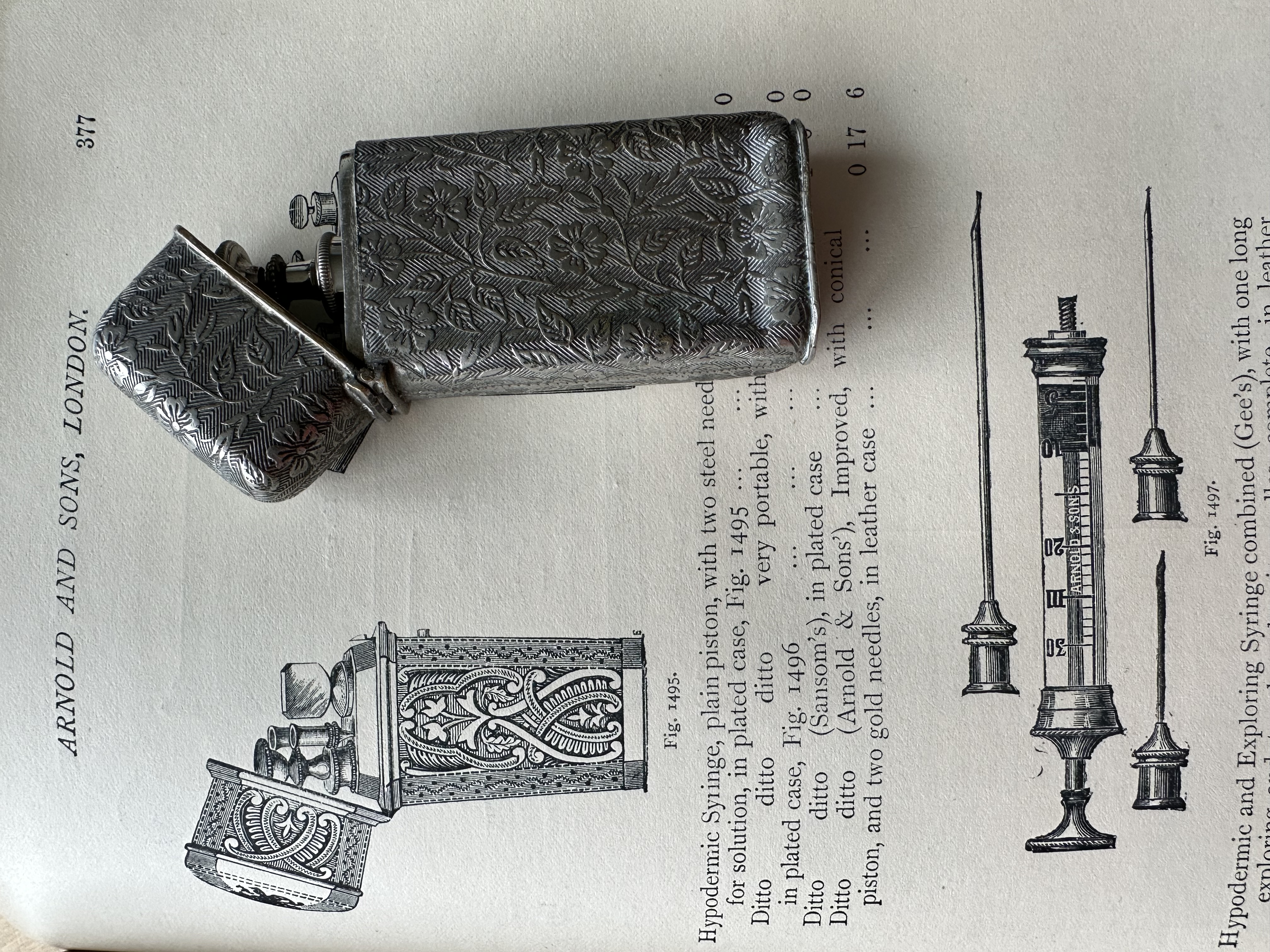
Reference Literature
Feldmann H. History of injections. Pictures from the history of otorhinolaryngology highlighted by exhibits of the German History of Medicine Museum in Ingolstadt. Laryngorhinootologie. 2000 Apr;79(4):239-46. German. doi: 10.1055/s-2000-8797. PMID: 10838689.
Remarks
German silver
German silver, also known as nickel silver, is an alloy composed primarily of copper, nickel, and zinc. Despite its name, German silver does not actually contain any silver. The name comes from its silvery appearance. The typical composition is about 60% copper, 20% nickel, and 20% zinc. This material is known for its hardness, corrosion resistance, and its ability to take a high polish, making it popular for use in making cutlery, musical instruments, and various valuable items in the decorative arts. It was also historically used for making coins and medals.
TAMU
In the name of Texas A&M University, abbreviated as TAMU, where "A. and M." stands for "Agricultural and Mechanical." Originally named the Agricultural and Mechanical College of Texas, the university was established in 1876 as the first public institution of higher education in Texas. Over time, Texas A&M expanded its academic offerings far beyond agriculture and mechanical engineering, becoming a comprehensive university including medical school.
Pravaz syringe
Syringes themselves have been known for a long time and have been used in medicine since antiquity. However, to inject drugs under the skin, there was no other way than to make an incision in the skin. Charles Gabriel Pravaz, (1791–1853), French orthopedic surgeon, inventor of the syringe (rather than the hollow needle invented by Alexander Wood). In 1851, wishing to inject coagulating ferric perchloride into an aneurysm, he designed and manufactured a silver syringe 3 cm long and 5 mm in diameter in the Charrière company. The plunger was advanced by screwing, which allowed control of the amount injected. The cannulas and trocars were made of gold or platinum. However, he introduced sclerotherapy for varicose veins. It was the surgeon Jules Béhier who named it the “Pravaz apparatus or syringe” and popularized its use in Europe.
The drugs used were in high concentrations, so very precise injection dosage was required. At that time, the scale for determining the volume of liquid injected was not applied to a glass flask, but to the flat part of the inner rod - a piston fitted with threaded teeth. To make the injection, the piston was not pressed, but slowly inserted by rotary movements of the external screw mechanism. This allowed very precise doses of medication to be administered.
To make the flask airtight and avoid seepage of liquid between the walls of the flask and the piston. The piston was isolated from the liquid by a thread wrapped several times around its end.
The Pravaz syringe did not yet have a hollow sharpened needle, nor did it have a cannula nozzle. Therefore, injection with this model was rather complicated: a sharp trocar was inserted into the blunt hollow needle, and the needle, thus reinforced and sharpened, was inserted into the skin. Once the desired position was reached, the trocar was withdrawn, leaving the needle in place – this manipulation is similar to the trocar placement during laparoscopy. So, the filled syringe was threaded onto the cannula. Subcutaneous injection was then performed by screwing the piston forward until the desired volume was reached.
The first syringes were complex reusable devices that were quite expensive and carefully stored in a metal case or velvet-lined wooden box. In addition to the syringe and needle, the set included several thin wires to clear the lumen of tissue debris and blood. Though made of glass and steel, syringes and needles were usually only washed, without sterilization.
The widespread use of the Pravaz syringe was not for sclerotherapy, but for the administration of morphine - this had much wider implications. The new method of opiate anesthesia became very popular already during the Crimean War. In the following wars of the 19th century a large number of soldiers became morphinists in this way, and later this fashion spread to civilians (remember at least Sherlock Holmes).
The Pravaz syringe was a pioneering tool for its time and paved the way for modern syringes for the parenteral administration of drugs, which today play a crucial role in medical treatment and vaccination.
